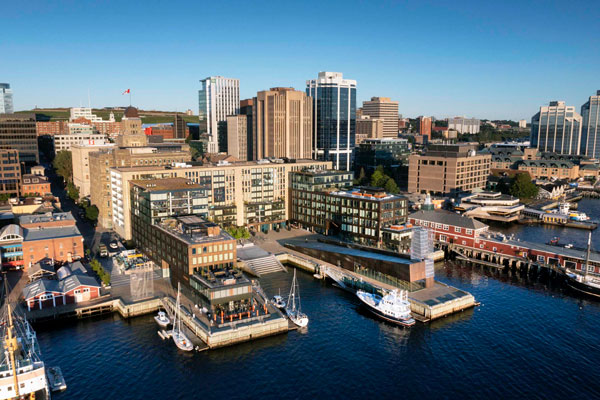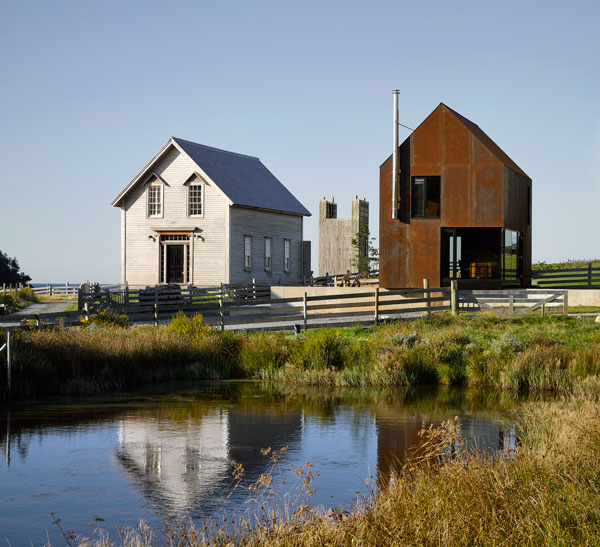The co-founder of a niche Halifax-based architectural firm that has won over 140 awards around the globe, Brian MacKay-Lyons was among 99 Canadians newly appointed to the Order of Canada late last month.
The designer is a recently retired full professor and faculty member at Dalhousie University who has held numerous visiting professorships at schools around the world including the Peter Behrens School of Architecture in Dusseldorf, Auburn, McGill and Harvard.
The Order of Canada membership was a “nice surprise,” MacKay-Lyons said. The more he thought about it and took calls of congratulations, he realized it was different from other awards his firm MacKay-Lyons Sweetapple Architects has received in that it was a cultural award, not from his peers.
“It’s really about community and that makes it a lot more meaningful, because architecture is a social art. It’s all about community and culture. So I began to think, that’s more interesting.”
MacKay-Lyons was born and raised in the village of Arcadia, received his Master of Architecture and Urban Design at UCLA and studied in China, Japan, California and Italy with the likes of Barton Myers and Giancarlo De Carlo before returning to work in Nova Scotia in 1983. Along the way he learned architecture is best practised as a team, not as a solo “noble savage.”
“One of my mentors that I used to work with in California, he said buildings are receptacles of human energy, so you build on the energy of others, and the others could be clients, could be builders, could be engineers, planners.”
MacKay-Lyons and his co-founding partner Talbot Sweetapple run a practice that has taken on important public projects such as the Queen’s Marque and the Faculty of Architecture building at Dalhousie but with a greater focus on smaller buildings, especially residences. The Order of Canada citation stated the architect was recognized “for his contributions to architecture, notably through his vernacular designs that celebrate Nova Scotia culture.”
“The vernacular is of the people,” said MacKay-Lyons.
“If you’re a democratically-minded person, you believe in a democratic view of the world or of culture. You tap into cultural knowledge when you tap into the vernacular. It ensures cultural relevance and renewal because I think when cultures get away from the vernacular we lose our way.”
Democracy is also learning from atypical sources.
“When you talk to an old shipbuilder, or someone here in Nova Scotia, and they say, ‘Well, this piece of trim is up to the roof to keep the bats out,’ you think, wow. That’s pretty interesting.”
The Queen’s Marque was an urban design project that redeveloped a large section of Halifax’s original harbour. MacKay-Lyons said he sat with the project owner Scott McCrea many Fridays over 10 years to develop a plan, in partnership with other designers, that integrated mixed uses with three public spaces.
Materials such as sandstone, Muntz metal and timber referenced shipbuilding and wharves.
“The Queen’s Marque was all about materials of place. The sandstone…that comes from Wallace, Nova Scotia. The Muntz metal on the buildings, that’s used for the keels of ships.”

One of the buildings is called Rise Again, familiar from the Rankin Family song and another Maritime tune about the sunken ship the Mary Ellen Carter.
“We have a culture here in the Maritimes that can be celebrated and we can do excellent things here like we used to.”
MacKay-Lyons created the firm’s Ghost Residency based in Lunenburg County as an internship for graduate architects. Participants contribute to a research workshop for the firm’s house design portfolio and work on MacKay-Lyons’s farm. Over the years the teams have built some of the firm’s best-known residences in the area.
“It used to be that in a traditional beaux arts architectural education, for hundreds and thousands of years, really, emphasis is on making a good street, a good city. How do you become a good citizen architect? How do you make sure your building is not disruptive but actually contributes to a better whole?
“In architecture school, I think we’ve kind of lost that sense of community.”

MacKay-Lyons said he is driven by curiosity and a utopian urge. A current project in Cape Breton, the redevelopment of the Tartan racetrack, offers a good example, he said. It will have 450 units of modest affordable homes, he said, but “monumentally modest.”
“If you say, well, these people don’t deserve or can’t afford something special, that’s very cynical… even a modest project, everybody’s entitled to dignity.
“The utopian urge is there every single time, not just when there’s a lot of money. Every day you go to work and try to make something a little better.”
Follow the author on Twitter @DonWall_DCN









Recent Comments